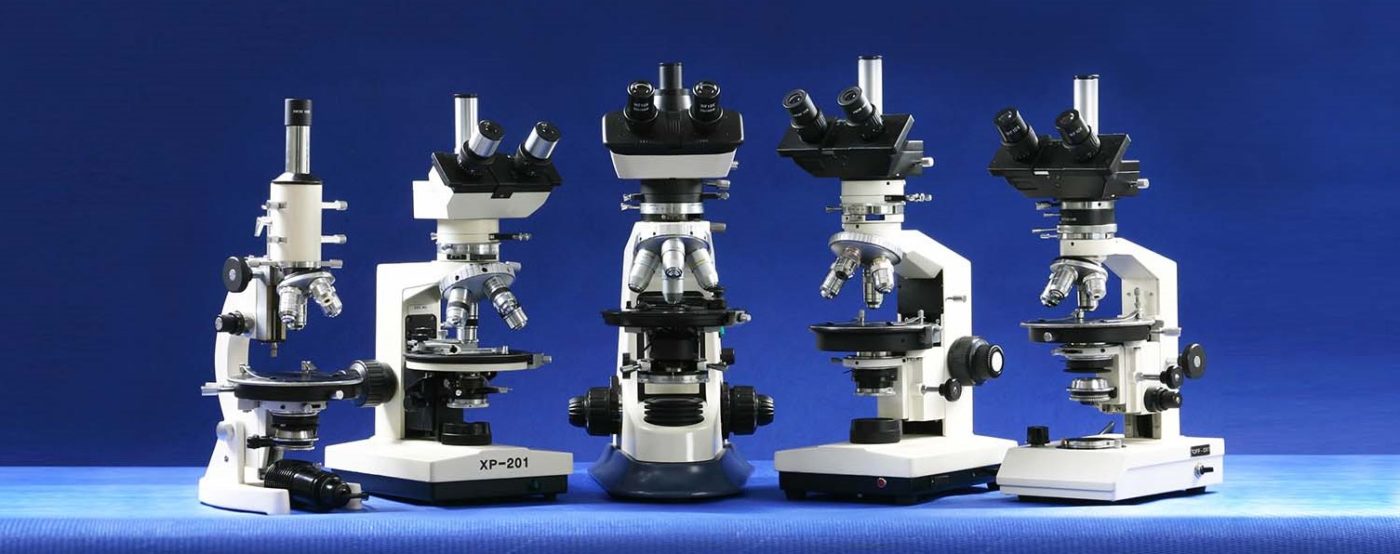Great Microscopes
Philippines Microscopes
In the Philippines, there is an ongoing development in the scientific and medical research, as well as in metallurgical, forensic and environmental studies. Development implies better technology and better equipment. Great Microscopes continues to strive to be on top of developments in the field of microscopy, working with top engineers and scientists to design equipment necessary to achieve more efficient processes in scientific research and manufacture of high quality technological products.
- Biological Microscopes: In the field of biology alone, microscopes are essential to a lot of standard laboratory techniques: detection and identification of cells, may it be plant, animal or microbial in origin; embryo and tissue culture, dissection, artificial pollination, cell grafting, genetic engineering, biochemistry and much more. A student who finishes a basic biology course should have also learned how to use a basic biological microscope, or even a dissecting microscope. Our low-budget microscopes are designed for students who have limited funds but have a need for high quality microscopy instruments. For doctors, veterinarians and scientific researchers, we also have a wide range of professional biological microscopes to provide the best imaging and resolution possible.
- Microscopes for Agricultural processes: The Philippines is gifted with natural resources, and that is why one of the main sources of livelihood is agriculture. It can either be crop planting (rice, sugarcane and other root crops). It may also be aquaculture. One of the common problems encountered by farmers is the proliferation of parasites and pests. Though there are pests big enough to be seen and caught with bare hands, the more dangerous ones are those that are not visible to the naked eye. This entails the use of special substances and/or equipment in order to detect these microscopic pests. The disadvantage with using chemicals is that it is not usually cost effective. Farmers and fishpond owners apply chemicals to their lands or ponds every spawning or sowing period, simply because they don’t have a way to detect the parasites and they are just presuming and preventing the spread of the said organisms even if there is actually the absence of the parasites. This is not very practical for the backyard farmers or tenants. However, this can be solved by simply having their microscope and regularly checking their fields or ponds to see if their crops or fishes are being infested with parasites. A basic compound microscope is just a very small investment, but is proven to an effective diagnostic tool proven by many aqua culturists in the Philippines.
- Microscopes for industrial use: The people who invented and eventually developed the compound light microscope are biologists, doctors, or scientists. Because of this, we normally assumed that microscopes are only used in biology and medicine and nothing more, but as technology progressed, man discovered that there are a lot more practical uses for this invention. He found out that he can make smaller objects using this thing we call the microscope. We can polish surfaces better and better. We can further look into finer details of a gemstone, for example. Later on, with the advent of the industrial age and mass production, the need for quality assessment of assembly lines and product batches also arose. Inspection microscopes usually interfaced into a TV output with the use of CCD or analog cameras connected to the microscopes, gradually became popular. In the Philippines, industries that are in great need of microscopes are those in the electronics and metalwork, such as in the production of car or aircraft parts. The use of metallurgical microscopes in these fields is essential because metal samples need to be tested for strength and tolerance to strain, and the effects of shear stress in metal may be manifested in their surfaces down at the microscopic level, where very minute cracks are very critical, especially in the design of infrastructure and vehicles.
Great Microscopes is a Philippine microscope dealer backed up by a leading US microscope company, so you are ensured that you are getting high quality but very affordable microscopes! We are also ready to accommodate international clients especially around Southeast Asia.
- One major trait observed in the Philippines concerning product sales is the strong affinity to imported products, especially the ones made in developed countries like US, Germany or Japan. Another noteworthy observation is regarding products made in China. There is a misconception that all products made in China are substandard, but in actuality, this is not the case. A lot of huge American companies produce a major bulk of their high quality products in factories in China. Our products are also made in Chinese factories that pass rigorous production regulations and quality standard inspections.
- One setback in international sales is the communication barrier. This comprises a lot of aspects such as language. For example, a potential Filipino microscope buyer will have a hard time dealing with German or Japanese manufacturers simply because they do not understand each other well. This is one great advantage of Great Microscopes: who can better understand how to deal with potential microscope buyers in the Philippines than by Filipinos themselves? Our friendly sales representatives can assist and advise you on what specific model of microscope will fit your needs and most especially, your budget.
- Another potential problem is the high cost of importing goods from other countries. But with Great Microscopes, you don’t have to worry about this! We can deliver the microscope right to your doorstep! You may also pick your microscope up at our store! What a great convenience!
Conclusion is, Great Microscopes can provide all your microscopy needs, and the good news is, you’re just one phone call away from having your best microscope deal in the Philippines. Try us now!

